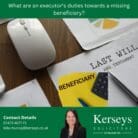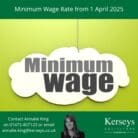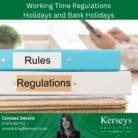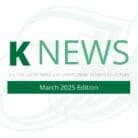Detailed Guidance on Furlough Leave
Detailed Guidance on Furlough Leave
On Friday, 20 March 2020 the government announced that it was introducing a Coronavirus Job Retention Scheme (also known as Furlough Leave). On the back of that announcement the government has now published some detailed guidance. You can read the detailed guidance here https://www.gov.uk/guidance/claim-for-wage-costs-through-the-coronavirus-job-retention-scheme but the key points are:
From the Employer's Point of View
From the Employee's Point of View
- The scheme is open to all UK employers that had a PAYE scheme in place on 28 February 2020.
- An employer can reclaim up to 80% of wage costs up to a cap of £2,500 per month, plus associated employer costs such as employer National Insurance Contributions and minimum auto-enrolment pension contributions on that wage. Fees, commission and bonuses should not be included.
- To calculate an employee’s regular wage the employer should:
- For salaried employees (full time and part time) – use the employee’s actual salary before tax as of 28 February 2020. Fees, commission and bonuses should not be included.
- For employees whose pay is variable – the employer can claim for the higher of (i) the same month’s earning from the previous year (e.g. for March 2020 they can use the employee’s earnings for March 2019) or (ii) the average monthly earnings for the employee in the 2019-20 tax year.
If an employee has been employed for less than a year, the employer can claim for an average of the employee’s monthly earnings since they started work.
If the employee only started in February 2020, the employer can use a pro-rata for the employee’s earnings so far.
- Claims can be backdated to 1 March 2020.
- An employer can only claim once every three weeks, i.e. it cannot get weekly reimbursement.
- An employer will still be liable to pay Employer National Insurance contributions on wages paid as well as automatic enrolment contributions on qualifying earnings unless an employee has opted out or has ceased saving into a workplace pension scheme.
- Furlough Leave must be taken in minimum blocks of three weeks to be eligible for funding from the government. That said, there is nothing in the guidance which prohibits rotating Furlough Leave amongst employees as long as each employee is off for a period of at least three weeks.
- When an employer asks it employees to agree changes in hours and acceptance of 80% pay, it must follow normal employment law rules. As such, not only will the employer need the consent of the employee to put them on Furlough Leave and reduce their wages (if it’s not provided for in their contract of employment), it will also need to ensure that it does not discriminate against an employee when choosing who should be furloughed.
- To be eligible for Furlough Leave, the individual must have been on the payroll (paying under the PAYE scheme) on 28 February 2020. The individual can be a worker or an employee as long as they were on the PAYE payroll. If the employee was hired later than 28 February 2020 then they are not eligible. In addition, anyone who was on the payroll on 28 February 2020 and has since been made redundant can be re-hired and put on the scheme.
- At a minimum, an employer must pay its employees the lower of 80% of their regular wage or £2,500 per month. So, any employee whose gross income per month is £3,125 or more will receive £2,500 less the normal deductions. An employee’s wages will still be subject to Income Tax and National Insurance as usual and they will also need to pay automatic enrolment pension contributions on qualifying earnings, unless they have chosen to opt-out or to cease saving into a workplace pension scheme.
- An employer can also choose to top up an employee’s salary beyond this but it is not obliged to under the scheme. That said, an employer will need its employees to agree to go on Furlough Leave and only receive 80% of their wages.
- An individual is only entitled to the National Minimum Wage for hours they spend working. Therefore, as they are not working when on Furlough Leave, they are not entitled to the National Minimum Wage during that time. This means that, even if 80% of their normal earnings would take them below the minimum wage based on their normal working hours, they still only receive that 80%. But, if they spend time training then they are entitled to be paid the National Minimum Wage for the time they spend training.
- To be eligible, the employee must not be working for their employer at all. So, if they work for even an hour, the employer will not be able to claim for that employee for that period. However, the employee is able to undertake training and do volunteer work, provided they do not provide services to or make any money for their employer.
- An employee on Furlough Leave still has the same rights as they did previously. This includes the right to Statutory Sick Pay, maternity rights, other parental rights, rights against unfair dismissal and the right to receive a redundancy payments. It also, presumably, means that an employee’s right to annual leave in unaffected.
- An employee on sick pay or self-isolating cannot be furloughed during that time. However, they can be furloughed afterwards. Employees who are shielding can be placed on Furlough Leave.
- Any employee on maternity (or similar) leave can continue to draw their SMP (or similar) payments. The guidance does not prohibit women on maternity leave agreeing to return to work early and then being furloughed, or electing to change to shared parental leave and then being furloughed.







